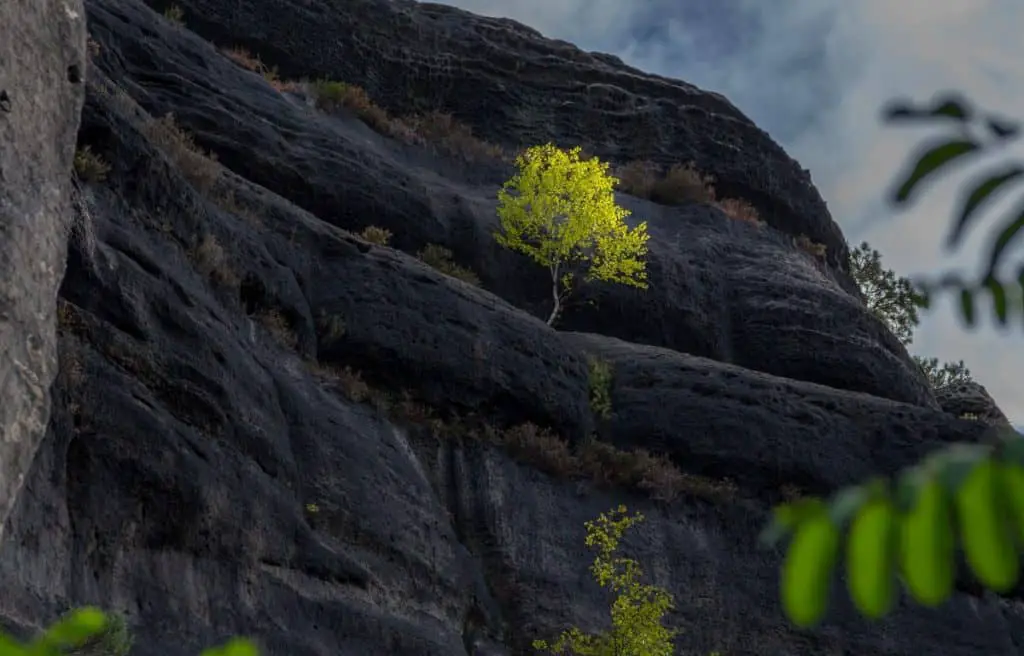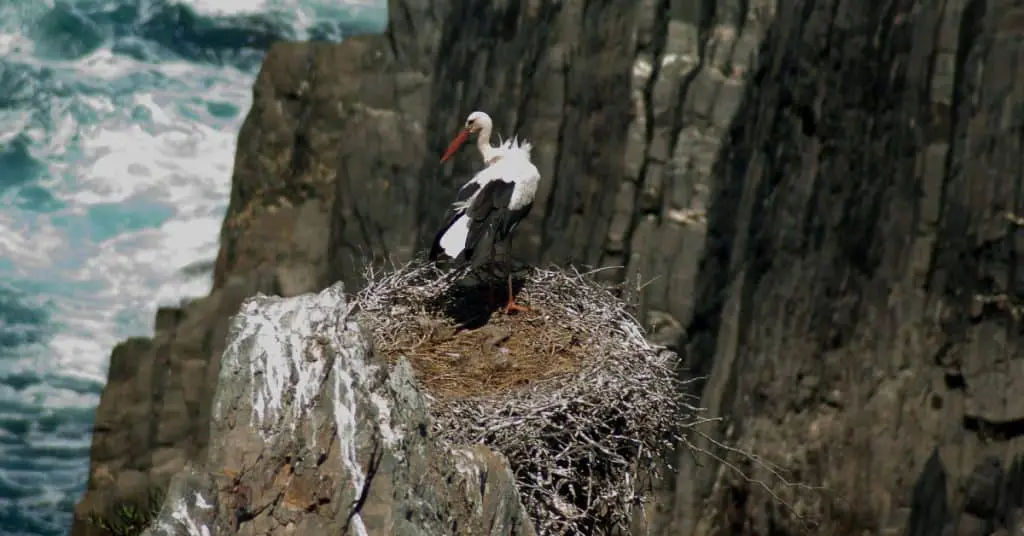
Rock climbing is a sport and an outdoor activity, which consists of climbing rocks and walls. It originated as one of the types of mountaineering disciplines. In 2017, rock climbing was included by the IOC in the 2020 Summer Olympic Program. However, the growing popularity of this sport worries environmentalists. They believe that rock climbing can either directly or indirectly cause damage to the environment.
So, what are the environmental impacts of rock climbing? Due to the quick-growing popularity of the rock climbing, there is an increasing amount of significant environmental issues such as removal of vegetation and soil, and a decrease in plant diversity. Many famous climbing sites lie within National Parks and Nature Reserves. Excessive activity in those places can affect wildlife – a multitude of plants and animals, including many unique species.
Page Jumps
- How Does Rock Climbing Affect the Environment?
- What are the Climbing Restrictions in the USA, UK and Other Countries?
- What People Can do to Reduce the Environmental Impacts of Rock Climbing
- Conclusion
How Does Rock Climbing Affect the Environment?
The effects of rock climbers on the vegetation
Cliff ecosystems are very common throughout the world; however they are one of the least examined environments. As a result, much of the biological variety and ecology of these isolated locations remain unknown. Maybe it is a habitat of rare flowers or undiscovered plant varieties.
An increasing number of rock climbers and their negligence and carelessness can lead to changes in the ecosystem. And those changes can cause damage to some species or even cause their extinction. That is why it is so essential to leave them untouched.
Rocks are the home for specific and distinct biota including lichens, plants and even ancient trees. But, growing levels of a recreation like rock climbing can lead to conflicts between the purposes of nature conservation and people’s entertainment.
Wind and falling trash (e.g. stones, ice, branches) are the most frequent troubles that affect the development of rock wildlife. But recreational activities such as technical rock climbing and hiking have the most disturbing influence.
The most common environmental impacts from rock climbing result from training at hill bases, climbing cliff tops and damaging of soils and plant roots on rock faces during the route’s formation and consequent ascents.
Many studies confirm that rock climbing negatively affects vascular plants. It also depends on the climbing style and the characteristics of the rock face.
Many plants usually prefer wetter hills with smaller solar exposure, and those places are not typical for climbers. Unlike moss and vascular plants, lichens often grow on the climbing routes. Both climbers and these organisms prefer sharp rocks, so the impact on them would be the largest.
Careful control of cliff ecosystems will need hard decisions regarding both existing trails and the development of new climbing routes by environment supervisors. Environment supervisors can collect information about the intensity of the cliff use. Based on this data, they can plan new climbing routes to minimize the negative impact on the environment.
Rock climbers also can help with monitoring the presence of plants and determining the places that need protection. Conscious use of available routes can enable rock climbing with no damage to the cliff vegetation.
The effects of rock climbers on animals
Vertical cliff faces are habitats of many bird species. And rock climbers often prefer the same hills occupied by those animals for their activities. The disturbance caused by a human can cause the birds to temporarily or permanently abandon their nest.

Nevertheless, they rarely leave their nests. If the rock climber disturbs the birds when chicks have already hatched, parent birds will continue caring for their children. However, climbers should be careful in spring. For most bird species, it is their typical mating season. The appearance of climbers at the cliff may seriously increase the chance of breeding failure for birds.
Many studies suggest that rock climbing should be forbidden at hills hosting endangered bird species. For the pre-Alpine region, the period of climbing prohibition varies between the beginning of February and the end of July.
In massive rocks areas, such as large mountain systems or extensive cliff faces, it will be enough to prohibit climbing in some specific places. Still, a complete climbing ban is required in these areas at the start of the mating season to let the birds choose the site for their nest without any problems.
Furthermore, it would be best to partly prohibit rock climbing, including the part of the hill close to the bird’s nest, to enable their reproduction. In such situations, the preserved rock part should span no less than 150m from each side of the bird’s nest. If the cliffs are smaller, environment supervisors should ban climbing activity on the entire rocky face.
What are the Climbing Restrictions in the USA, UK and Other Countries?
In the UK, the British Mountaineering Council (BMC) regulates the environmental impacts of rock climbers. BMC Environment Policy includes recommendations regarding travelling, energy use, environment protection, reducing the impact of mountain climbers and supporting mountain economies.
As for travelling, the Council recommends that hill walkers, climbers and mountaineers reduce long trips to foreign destinations and promotes local walking and climbing routes. Also, the organization provides transport for club members so the climbers don’t use cars and therefore this reduces CO2 emissions. BMC supports car sharing and using public transport.
The British Mountaineering Council also actively supports and explains to hill walkers, rock climbers and mountaineers how their actions contribute to environmental changes. They give useful advice and assistance to reduce their negative influence on the environment.
BMC also informs travellers that you can meet several nationally and internationally protected flora and fauna varieties on crags, and that you should not disturb them. This community actively supports the protection of endangered species and works with conservation authorities to ensure the proper restrictions to minimize the impact on nature.
The BMC also supports monitoring and research of particularly sensitive places to guarantee the effectiveness of conservation programs. The Council promotes good practice to hill walkers, climbers, and mountaineers. All BMC members have to aim to produce minimal influence on the environment and should respect the needs of animals that live there. You can find all the latest rules and restrictions on climbing areas in the UK on the BMC Regional Access Database (RAD).
In the USA, many environmental groups try to maintain the beauty of sheer rock faces together with its ecosystem. Many rock climbers promote environmental consciousness and create the smallest impact.
Screw placement on climbing routes damages the nature of the cliff; however, in most types of climbing (other than bouldering and free solo) climbers cannot do without them. Many environmental organizations claim that experts should regulate screw placement. Communication between environmental policymakers and rock climbers was quite limited in the past. Now they work together on defining the needed restrictions to help preserve nature.
Such organizations, as The Access Fund and The Wilderness Society, focused on meeting the needs of both environmentalists and climbers. They are also charity organizations that are working on saving the ecosystem of the rocks.
In the USA, four agencies are involved in solving environmental issues related to climbing. This list includes the Forest Service, the Bureau of Land Management (BLM), the National Park Service, and the Fish and Wildlife Service. They develop regulations and restrictions that help to save the wildlife around the cliff areas. Below are some standard laws regarding rock climbing:
- Climbers have to respect the established rules and avoid parking their car in sensitive places.
- You should follow fixed routes, as it allows minimizing your negative impact.
- Do not leave any trash and keep the area clean.
- Do not remove any vegetation or bird nests on your way.
- Do not enter the closed area, as you can cause irreversible damage to nature.
What People Can do to Reduce the Environmental Impacts of Rock Climbing
- Respect sites of cultural, geological or other scientific interest. Do not take any actions that create needless erosion. It is better to use existing climbing tracks.
- You can also protect the wildlife of the rocks. Do not touch nesting birds and their eggs.
- Support the existing ecosystem of climbing places.
- Do not purposefully remove any vegetation from the cliff, as it damages the natural environment. Always follow established routes.
- Do not install extra screws on existing climbing routes.
- Restricting the interaction between native fauna and climbers decreases the risk of any negative impact. That is why you should pay special attention to annual limitations during bird mating seasons. It is better to avoid places inhabited by endangered animals.
- To guarantee that climbing areas stay beautiful, try not to leave any waste. Do not pollute supplies of freshwater.
- Take out all the rubbish you bring and, when you see trash left by someone else, you can take it out too. Pay special attention to small waste. They also negatively affect the climbing route.
- Dispose of wastewater, especially soapy water from washing dishes or hands, at least 60m from any source of the freshwater or climbing track.
Conclusion
Rock climbing is a favored activity for many adrenaline lovers. However, the growing popularity of this sport harms the environment and wildlife. It can lead to the disturbance of many bird species, as well as many plants.
Nevertheless, reducing your environmental impact isn’t hard. You can help protect the environment by following established rules, taking away your waste and donating to environmental organizations. Rock climbing in the past has been quite brutal to the environment but now we have to understand that only we can protect nature. So let’s do it together!
Now that you’ve read this article, you might want to check out 5 different types of rock that climbers find outside.
